Christ

¡@
Bible Characters
| Main page |
Christ |
Joseph | Moses |  |
David |
¡@
¡@
* (bmp file)
¡@
Henryk Siemiradzki. Entrance of Christ into Jerusalem. Sketch for the fresco of the Cathedral of Christ the Savior in Moscow. 1876. The Russian Museum, St. Petersburg, Russia
¡@
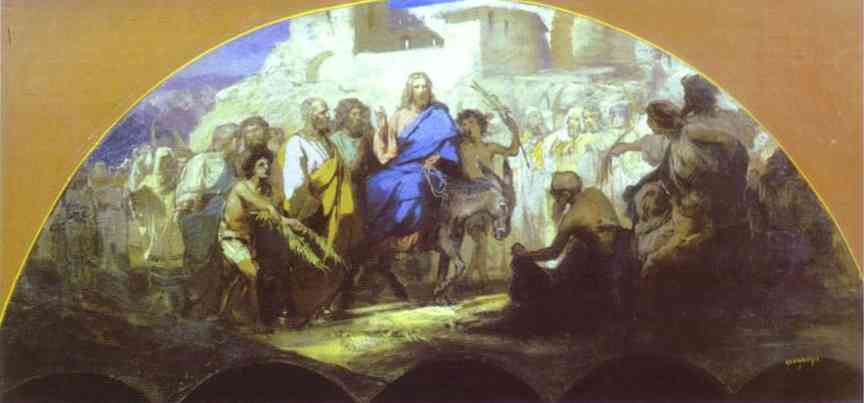 |
¡@
Christ Entering Jerusalem is the final visit to the city. It happened several days before the Passover festival, and the crowds of pilgrims who had come for the festival went out to meet him ¡§with palm branches in their hands, shouting , Hosanna! blessed is the king of Israel!¡¨
¡@
¡@
¡@
¡@
¡@
¡@
Giotto. Washing of the Feet. 1304-1306. Fresco. Capella degli Scrovegni, Padua, Italy
¡@
¡@
Before the supper Christ 'rose from the table, took off his outer garment
and taking a towel, tied it round him. Then he poured water into a basin, and
began to wash his disciples' feet and to wipe them with a towel....
¡@
¡@
¡@
¡@
¡@
Leonardo da Vinci. The Last Supper. c.1495-1498. Oil and tempera on plaster. Santa Maria delle Grazie, Refectory, Milan, Italy
¡@
¡@
During supper Jesus took bread, broke it , and gave to his disciples with the words: ¡§Take this and eat; this is my body.¡¨Then he took a cup with wine and offered it to the disciples: ¡§Drink from it, all of you. For this is my blood, the blood of the covenant, shed for many for the forgiveness of sins. I tell you, never again shall I drink from this fruit of the vine until that day when I drink it new with you in the kingdom of my Father.¡¨
¡@
¡@
¡@
¡@
¡@
¡@
¡@
The Prayer on the Mount of Olives. 1308-11. Tempera on wood panel. Museo dell'Opera del Duomo, Siena, Italy.
¡@
¡@
Following the Last Supper Jesus with his disciples went to the mount of Olives. Then Jesus said to them that' tonight you will all lose faith because of me; for it is written: ¡§I will strike the shepherd and the sheep of the flock will be scattered. But after I am raised, I shall go ahead of you into Galilee.¡¨
¡@
¡@
¡@
¡@
¡@
¡@
¡@
* El Greco. The Agony in the Garden. 1605-1610. Oil on canvas. Szepmuveseti Muzeum, Budapest, Hungary.
¡@
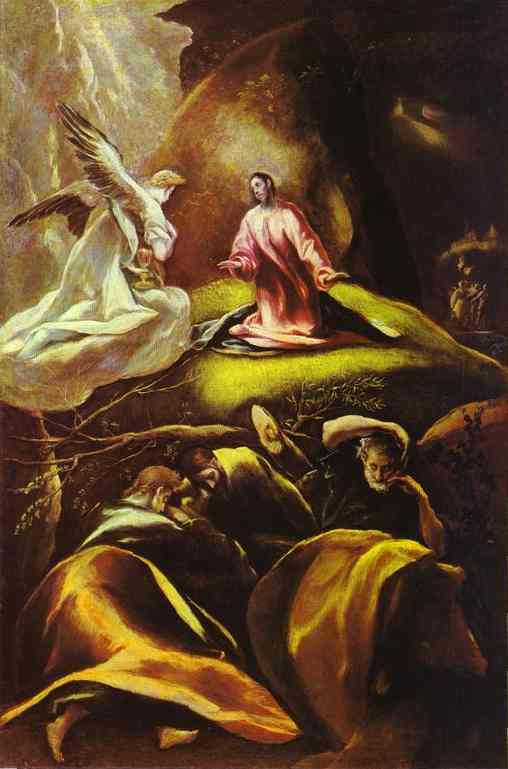
¡@
After the Mount of Olives, Jesus went up to the Garden of Gethsemane. He took with him Peter, James and John. He prayed there to his father Lord, begging him to release him from crucifixion...
¡@
¡@
¡@
¡@
¡@
¡@
Caravaggio. The Betrayal of Christ. 1602-1603. Oil on canvas. National Gallery of Ireland, Dublin, Ireland.
¡@
¡@
Arrest of Christ, the
Kiss of Judas, by which the traitor showed the wanted man, Jesus, and the
arrest itself. After the arrest the disciples flee. The tradition links Judas'
betrayal to Cain's murder of his brother Abel.
¡@
¡@
¡@
¡@
¡@
¡@
¡@
¡@
Duccio di Buoninsegna. Maestà : Jesus Mocked. 1308-11. Tempera on wood panel. Museo dell'Opera del Duomo, Siena, Italy
¡@
¡@
Trial of Jesus. After the arrest, Christ in answer to Caiaphas' s
questions said that he was the awaited Messiah and the Son of the God. Caiaphas
constituted that Jesus was guilty in blasphemy, punishable in Jewish law by
death.
¡@
¡@
¡@
¡@
¡@
¡@
¡@
¡@
* Nikolay Gay. "Quod Est Veritas?" Christ and Pilate. 1890. Oil on canvas. The Tretyakov Gallery, Moscow, Russia.
¡@
 |
¡@
¡@
¡@
¡@
¡@
¡@
¡@
Duccio di Buoninsegna. Maestà : Pontius Pilate Washing his Hands. 1308-11. Tempera on wood panel. Museo dell'Opera del Duomo, Siena, Italy
¡@
¡@
The guards brought Christ to the Roman governor of Judaea, Pontius Pilate.
After interrogation Pilate could ¡§find no fault in this man¡¨ and sent Him,
since He was Galilean, to Herod, the then King of Galilee. This last mocked
Christ and sent Him back to Pilate, who proposed to release Him. But the high
priests present cried that Christ should be crucified, while the other man,
Barabbas, who was under the trial for murder simultaneously with Christ, should
be released on the spot. Pilate then washed his hands, saying ¡§I am
innocent of the blood of this just person¡¨; he then released Barabbas,
had Jesus scourged, and handed him over for crucifixion.
¡@
¡@
¡@
¡@
¡@
¡@
¡@
Caravaggio. Flagellation of Christ. c.1606-1607. Oil on canvas. Musée des Beaux-Arts, Rouen, France.
¡@
¡@
¡@
¡@
¡@
¡@
¡@
¡@
¡@
Anthony van Dyck. The Crowning with Thorns. 1620. Oil on canvas. Prado, Madrid, Spain.
¡@
¡@
Flagellation and Crowning with Thorns, this episode takes
place after interrogation by Pilate, who washes his hands and delivers Jesus
over to soldiers, who beat Him with whips stuck with lead and fragments of bone;
after that the soldiers dress Him in purple, give Him a reed scepter and put on
His head a crown made of thorns, then they marched past Him, shouting ¡§Hail,
King of Jews!¡¨
¡@
¡@
¡@
¡@
¡@
¡@
¡@
Caravaggio. Ecce Homo. c.1600. Oil on canvas. Palazzo Rosso, Genoa, Italy
¡@
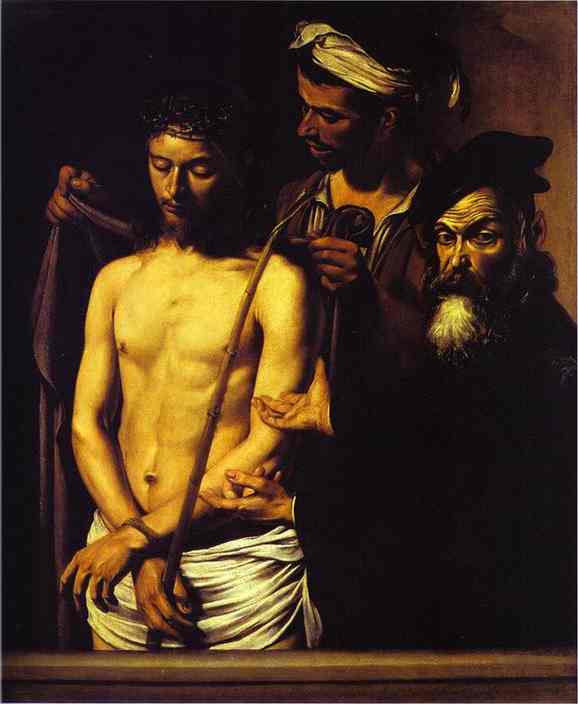
¡@
Ecce Homo, Latin for ¡§Behold the man¡¨, words of Pontius Pilate. The episode occurs after Jesus¡¦ Flagellation and the Crowning with Thorns. As the soldiers jeer at Christ ¡§Hail, King of the Jews!¡¨ Pilate announces that he is about to produce the accused to the high priests and says ¡§Behold the man!¡¨. When they see Christ they all cry out that he should be crucified.
¡@
¡@
¡@
¡@
¡@
¡@
¡@
¡@
Aert de Gelder. Ecce Homo. 1671. Oil on canvas. The Dresden Gallery, Dresden, Germany
¡@
¡@
¡@
¡@
¡@
¡@
¡@
¡@
¡@
Honore Daumier. Ecce Homo. c. 1849-52. Oil on canvas. Museum Folkwang, Essen, Germany.
¡@

¡@
¡@
¡@
¡@
¡@
¡@
¡@
Pieter Bruegel the Elder. The Procession to Calvary. 1564. Oil on panel. Kunsthistorisches Museum, Vienna, Austria.
¡@
¡@
¡@
¡@
¡@
¡@
¡@
¡@
¡@
Hieronymus Bosch. Christ Carrying the Cross. 1490. Oil on panel. Musée des Beaux-Arts, Ghent, Belgium. 1490.
¡@

¡@
¡@
¡@
¡@
¡@
¡@
¡@
¡@
* Lorenzo Lotto. The Carrying of the Cross. Oil on wood. Louvre, Paris, France.
¡@
¡@
Carrying the Cross and Crucifixion, the
execution for slaves in Ancient Rome. Christ was commanded to carry his cross to
the place of
execution on the mount of Calvary.
¡@
¡@
¡@
¡@
¡@
¡@
¡@
* El Greco. The Disrobing of Christ. c. 1600. Oil on canvas. Szepmuveseti Muzeum, Budapest, Hungary
¡@
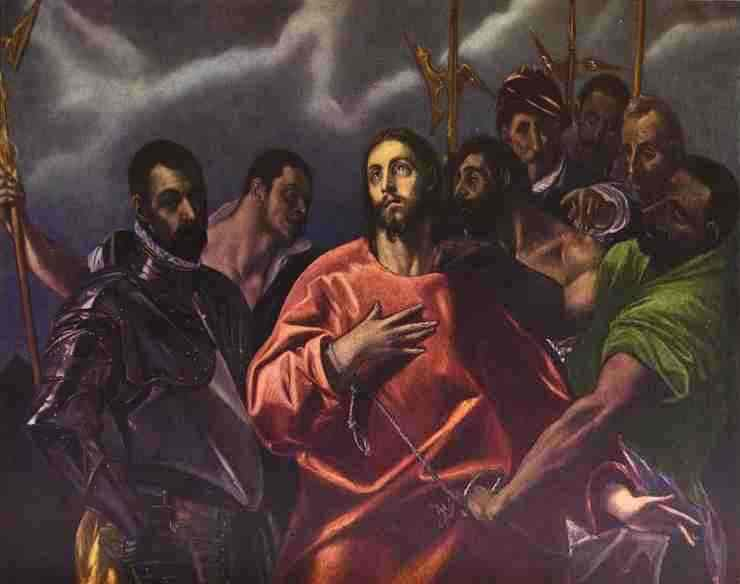
¡@
¡@
¡@
¡@
¡@
¡@
¡@
¡@
Maerten Jacobsz van Heemskerck. Golgotha (wings). Oil on canvas, transferred from panel. The Hermitage, St. Petersburg, Russia.
¡@
¡@
¡@
¡@
¡@
¡@
Peter Paul Rubens. The Elevation of the Cross (central part of the triptych). 1610-1611. Oil on panel. Cathedral, Antwerp, Belgium.
¡@
 |
¡@
¡@
¡@
¡@
¡@
¡@
¡@
¡@
Peter Paul Rubens. Christ on the Cross. 1620. Oil on canvas. Koninklijk Museum voor Schone Kunsten, Antwerp, Belgium
¡@
¡@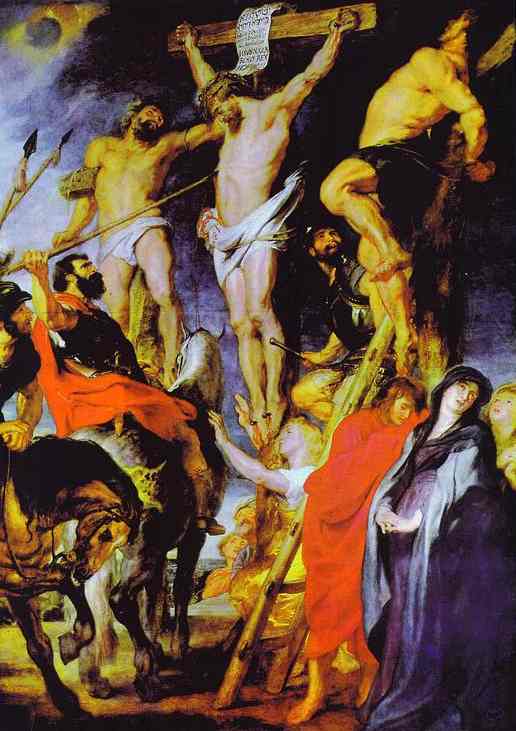
¡@
¡@
¡@
¡@
Francisco de Zurbarán. Crucifixion. 1650s. Oil on canvas. The Hermitage, St. Petersburg, Russia
¡@
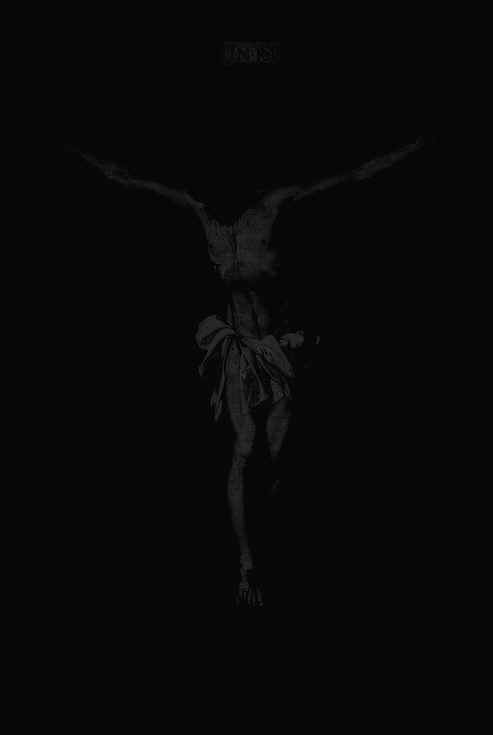
¡@
¡@
¡@
¡@
¡@
¡@
¡@
¡@
Peter Paul Rubens. The Descent from the Cross (central part of the triptych). 1611-1614. Oil on panel. Cathedral, Antwerp, Belgium.
¡@
¡@
¡@
¡@
¡@
¡@
Peter Paul Rubens. The Lamentation. c.1609-1611. Oil on panel. Gemaldegalerie, Berlin, Germany
¡@
¡@
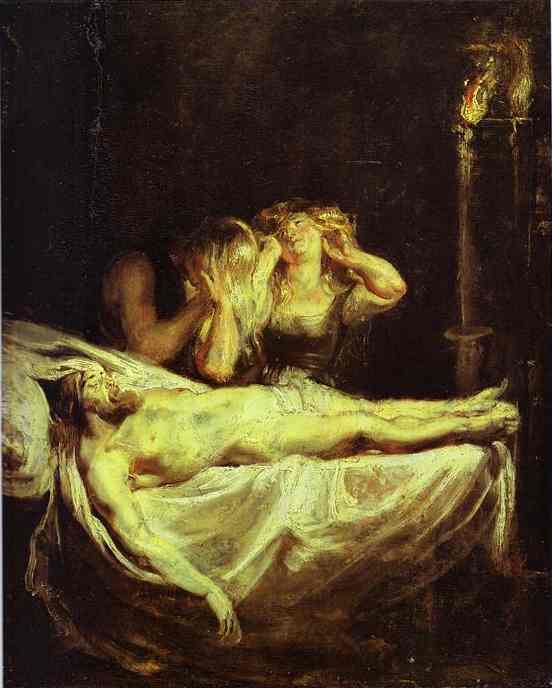
¡@
¡@
¡@
¡@
¡@
¡@
Jusepe de Ribera. The Deposition. Oil on canvas. Louvre, Paris, France.
¡@
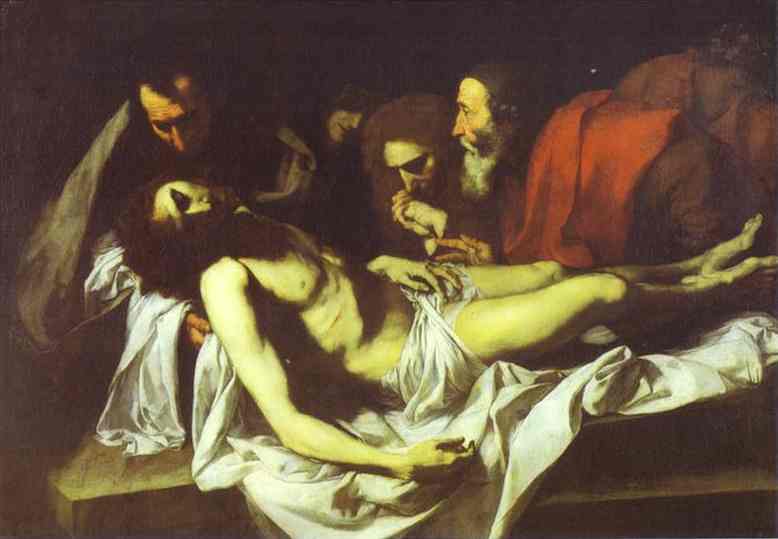
¡@
¡@
¡@
¡@
¡@
* Filippino Lippi. Pieta. c.1490. Tempera on panel. The National Gallery of Art, Washington, DC, USA.
¡@
¡@
Lamentation (also Deposition, Pieta) ¡V after Jesus¡¦ death, Joseph of Arimathea obtained Pilate's permission to bury His body. The closest people took the body from the cross, washed it and buried in a new tomb, not yet used for burial; and there, since it was the eve of the Jewish Sabbath, they laid Jesus.
¡@
¡@
¡@
¡@
¡@
¡@
¡@
¡@
Rembrandt. The Resurrection of Christ. c. 1635-39. Oil on canvas. Bayerische Staatsgemaldesammlungen, Munich, Germany
¡@
¡@
¡@
¡@
¡@
¡@
¡@
* Alexander Ivanov. The Appearance of Christ to Mary Magdalene. 1834-1836. Oil on canvas. The Russian Museum, St. Petersburg, Russia.
¡@
¡@
Three days after Christ's Entombment,
at the end of Sabbath, A women went to Holy Sepulchre to embalm Christ¡¦s body,
wondering on their way how they would be able to roll away the heavy stone in
front of the tomb. They found the tomb already open and in front stood a youth
clad in white, who told them, that Christ was not in the tomb but was risen.
This episode is also called in fine arts Holy Women at the Sepulchre.
¡@
¡@
¡@
¡@
¡@
¡@
Duccio di Buoninsegna. Maestà (back, crowning panel, detail of ): Christ¡¦s Appearance Behind Locked Doors. 1308-11. Tempera on wood panel. Museo dell'Opera del Duomo, Siena, Italy
¡@
¡@
Christ Appearance Behind the Locked Doors: Later the same day after Mary Magdalene had seen Christ Resurrected and transmitted his message to the disciples, the disciples were together behind the locked doors for fear of the Jews, Jesus came and stood among them ¡¥Peace be with you!¡¦ he said. Then he showed them his hands and his side and blessed them: "Receive the Holy Spirit! If you forgive anyone's sins, they are forgiven; if you pronounce them unforgiven, unforgiven they remain."
¡@
¡@
¡@
¡@
¡@
¡@
¡@
¡@
Caravaggio. Doubting Thomas. 1602-1603. Oil on canvas. Sanssouci, Potsdam, Germany.
¡@
¡@
Thomas refused to believe in Christ's Resurrection, and Christ came to him and asked to touch him and his wounds, and to believe ; then Thomas doubted the Assumption of the Virgin, and the Virgin undid her belt and let it fall into the hands of the doubting disciple.
¡@
¡@
¡@
¡@
¡@
¡@
¡@
¡@
Raphael. Cartoon for The Miraculous Draught of Fishes. c.1513-1514. Mixed media on paper, mounted on canvas. Victoria and Albert Museum, London, UK
¡@
¡@
After the Crucifixion, Simon/Peter returned to Galilee to his old trade.
During the night he and his companions did not catch anything. In the morning
they saw a man, who told them to cast their nets again; they did it and fetched
the nets full of fish. John, who was on the boat with Peter, then recognized the
man as Jesus and said, ¡§It is the Lord¡¨. Peter threw himself into the water
to try to get Jesus.
¡@
¡@
¡@
¡@
¡@
¡@
Jacob Jordaens. The Supper at Emmaus. c. 1645/65. Oil on canvas. National Gallery of Ireland, Dublin, Ireland
¡@
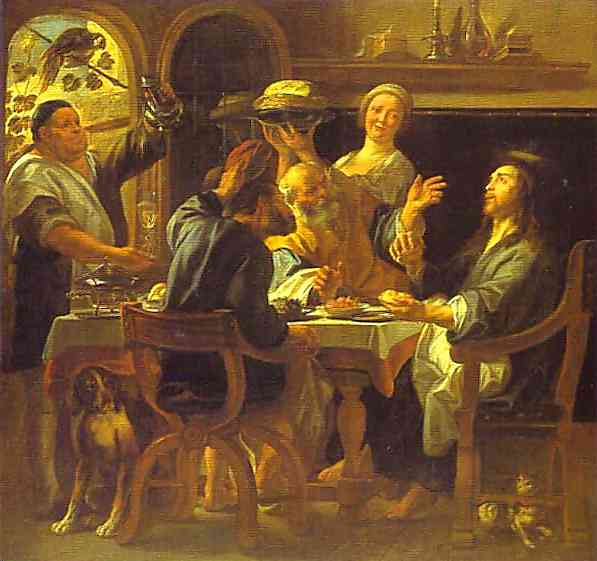
¡@
Emmaus
is a village about seven miles from Jerusalem.
After all the unhappy events of the trial, Crucifixion and Entombment of Christ,
two of the apostles were going from Jerusalem to the village of Emmaus. Christ
resurrected joined them and asked about the subject of their conversation. They
did not recognize Christ, and told him about the death of Jesus of
Nazareth, who was a prophet 'mighty in need', about their sadness, and grief,
and puzzlement after the women had found the tomb of Christ empty.
¡§How dull you are!¡¨he answered.¡§How slow to believe all that the prophets said! Was not the Messiah bound to suffer in this way before entering upon his glory?¡¨Then, starting from Moses and all the prophets, he explained to them in the whole of scripture the things that referred to himself.